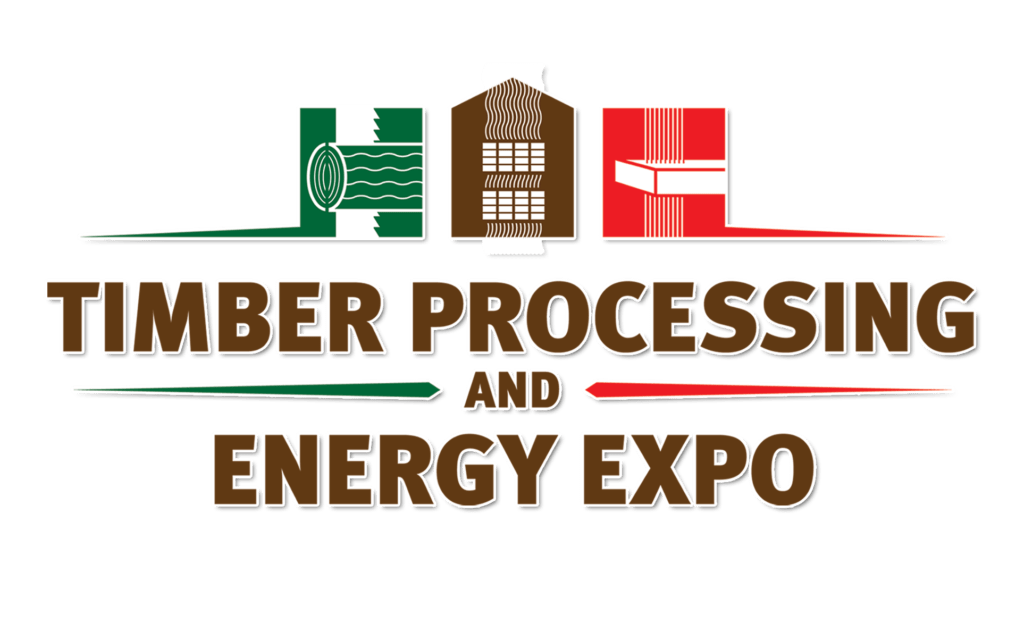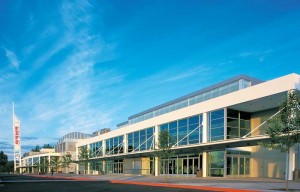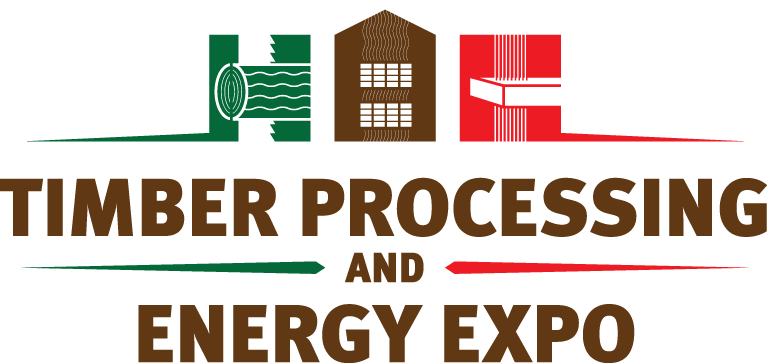
2012
PORTLAND, OREGON
The Timber Processing & Energy Expo, supported by Timber Processing magazine, Panel World magazine, Wood Bioenergy magazine and Hatton-Brown Expositions, was held at the Portland Exposition Center in Portland, Oregon, USA.
About 2012 TP&EE
There’s A New Show In Town!
 The Timber Processing & Energy Expo is scheduled for October 17-19, 2012 at the Portland Metropolitan Exposition Center in Portland, Oregon. The event will be sponsored by Hatton-Brown Expositions, an affiliate of Hatton-Brown Publishers, which publishes several magazines in the forest products industry, including Timber Processing, Panel World, Wood Bioenergy and others.
The Timber Processing & Energy Expo is scheduled for October 17-19, 2012 at the Portland Metropolitan Exposition Center in Portland, Oregon. The event will be sponsored by Hatton-Brown Expositions, an affiliate of Hatton-Brown Publishers, which publishes several magazines in the forest products industry, including Timber Processing, Panel World, Wood Bioenergy and others.
“We feel that the existing equipment shows in the Northwest, of which we’ve long been a part of, have veered off track,” comments Rich Donnell, Editor-in-Chief at Hatton-Brown Publishers and Show Director. Donnell says Hatton-Brown conducted surveys of a representative group of machinery companies and spoke to numerous mill personnel before moving forward. “Given Hatton-Brown’s position as long-time publishers of forest products magazines, with long-standing relationships with equipment companies, and our ongoing in-the-field connections to the mills and their managerial personnel, we feel we can do it right and offer an outstanding event that will benefit the industry at large. We believe we can add a personal touch with significant insight.”
Hatton-Brown views this event as primarily a wood products machinery event (including the lumber, engineered wood products and panel industries), with complementary support by the energy sector including mill-related wood based heat energy (lumber drying, cogeneration, etc.). He adds that the event will include seminars covering mill operational issues.
“We feel our venue in October 2012 will have much more to offer in many ways compared to other shows, including economics, and we believe that the new Timber Processing & Energy Expo will emerge as the primary wood products equipment show in the Northwest”, comments Donnell.
The Portland Metropolitan Exposition Center is conveniently located off Interstate 5 between downtown Portland and Vancouver, Washington. It’s only minutes from the Portland International Airport with nearly 2,000 area hotel rooms and shopping in close proximity.
Timber Processing & Energy Expo is scheduled for Hall D, which encompasses 72,000 sq. ft. and an abundance of outdoor space. The overall Exposition Center sits on 60 acres and includes five halls with 330,000 sq. ft. The facility hosts more than 100 events annually, attracting in excess of 500,000 attendees.
Workshop Day Presentations
Plywood Workshop Presentations 2016
Thursday, October 18
Room 202
Sawmill Scanning & Optimization
9:10-9:35 Bringing Grade to the Sawmill—Scott Norton, Optimization Manager, USNR
New tools require new thinking about how we saw a piece of lumber to make the most of its wood fiber. In this session you will learn about some of these new tools that are capable of affecting the ultimate grade of the wood in order to meet today’s demands for increased recovery, faster throughput, lower cost and higher grade extraction.
9:40-10:05 Practical Carriage Scanning and Optimization—Joey Nelson, President, JoeScan, Inc.
Carriage scanning and optimization projects present a complex and changing mix of choices, limitations, and trade-offs. How do you make the right choices for your unique needs? This talk will provide a clear and practical overview of the technologies involved. How does the addition of backside scanning can improve recovery? What are the trade-offs with scanner field of view and placement when cutting a wide range of diameter logs? The choices are never easy, but making a good choice always starts with understanding the issues.
10:10-10:35 Log Scanning and Automated Grading Solutions—Ludwig Fleischhackl, VP, Microtec North America
From 1990 to 2006, productivity in the woodworking industry has been growing steadily up to 40% (amount of output/employee) while the total gross value added of the industry remained stable. In 2007 Microtec introduced automated scaling solutions and in 2011 full CT scanning for logs, radically simplifying wood processing and boosting value optimization. Knowing the internal wood properties before breakdown is a game changer, allowing automation, streamlining and optimization to leap forward.
10:40-11:05 Building and Executing Your Optimization Strategy—Andreas Buers, Principal , Pöyry Management Consulting
Whatever your optimization strategy is—maximizing lumber volume, value, or a combination of both—getting reliable information from all your optimizers and executing each optimizer’s solution correctly is important to maximizing your profits. This session uses a case study of a mill’s optimization system to demonstrate the effects of alternative optimization strategies and performance levels on operational and financial results. This session is suitable for QA personnel, supervisors, operations and sales managers, and anyone else interested in optimization.
11:10-11:35 Latest Innovations in Automatic Lumber Grading—Dr. Scott Fairbanks, Sensor Design Engineer, and Dr. Ofer Heyman, Imagery Scientist, Lucidyne Technologies, Inc.
Improved and new sensors for complete automation of lumber grading will be presented. This session will focus on improved tracheid sensor for timber break detection, a revised grain angle sensor and a newly developed T3 sensor for decay detection.
11:40-12:05 New High Density 3D Transverse ProTrimmer Optimizer with Split Detection—Gale Miller, Southeastern Sales Manager, Autolog, Inc.
System layout complete with description, specifications and options available. Presentation of the new optimization software, the High Definition user’s interface, the hardware, the scanner configuration and the split detection feature.
Machinery Alignment & Sawing Systems
1:05-1:45 Keeping Your Machining Centers Precisely Aligned—Dave Halstead, Lead Metrologist, Measurement Technology–Matt Settle, Product Manager Precision Alignment Solutions, Brunson Instrument Co.
While primary mechanical equipment like motors, pumps and other coupled devices have well defined methods for alignment, many saw filing processes have additional geometric requirements that are equally critical to production, yet are less tangible to define or accomplish. Join us as we discuss how proper system alignment can make a positive impact on your organization. In this unique interactive demonstration, you will learn how to evaluate measurement devices to meet your specific needs, find faulty mechanical components that must be corrected prior to final alignment, define the critical geometries and machine features that must be controlled, set up reliable reference frames that produce consistent data, and include key personnel to assure operational changes are owed and implemented. Financial justification will also be presented to make the business case for introducing or expanding a precision alignment effort. This talk will specifically address the use of precision alignment in saw filing and what savings are being realized.
1:50-2:15 Dynamic Bandmill Cutting Optimization—Chris Lambert, Resident Engineer, Lacey-Harmer Co.
Typical scanning & optimization techniques for sawmills are highly effective at determining the most efficient cutting solutions and operational parameters, with the intent of maximizing efficiency and product yield. However, these optimizing processes often rely on basic assumptions regarding the actual cutting process itself. By directly monitoring the cutting process in real time, and dynamically adjusting feed rates based on actual cutting performance, an enhanced level of overall optimization can be achieved. Through the use of dynamic cutting efficiency feedback, it is possible to establish and maintain a balance between maximized cutting yield and actual cut quality. The advantages of real-time cut optimization also extend to safety (saw crash prevention), maintenance and reduction in band saw wear. This is an optimization technique that is often overlooked or ignored, but can make a dramatic impact in the overall performance of a bandmill operation, helping to increase overall profitability.
Wood Dust Issues & Technologies
2:30-2:55 Combustible Dust: General Awareness & Safety—Chris Chathams, Safety Manager, Timber Products Manufacturers Association
Using a graphic flowchart, TPM will detail the basics of what combustible dust is, the hazards associated with dust and best practices for workplace safety including hazard identification and methods of dust control. OSHA’s Combustible Dust Compliance Directive will be discussed and applicable NFPA codes and OSHA standards will be reviewed. These codes and standards, when taken together, list the safe practices needed to prevent a fire, deflagration, or explosion hazard. These topics will demonstrate how OSHA’s Compliance Directive applies directly to the timber products industry.
3:00-3:25 Controlling Fugitive Combustible Dust: What Wood Processors Need to Know—Brad Carr, President, Integrated Environmental Solutions
Controlling fugitive combustible dust has taken center stage in the recent past, prompted by devastating explosions due to dust buildup in plants. In the U.S., the Occupational Safety & Health Administration (OSHA) is rigorously taking more action to impose fines and enforce regulations concerning fugitive combustible dust. In Canada, the dust explosions at Lakeland Mills in April 2012 (killing two and injuring 22) and at Babine Forest Products in January 2012 (killing two and injuring 19) are also spurring Canadian regulators to focus on the risks associated with combustible dust. The purpose of this presentation is to educate wood processing plant managers and owners on practical steps they can take to comply with regulators, avoid heavy fines, and most important, keep employees safe. Brad Carr will highlight the standards that need to be considered, and present different ways to comply with these standards. Each approach will be examined, with the strengths and weaknesses of each approach described. The goal is to equip the audience with specific ways they can manage this problem.
Room 201:
Veneer Lathes & Dryers
9:10-9:35 Lathe Line Technologies, Implementation and Integration—Timothy Woodward, President, Daqota Systems, Inc.
This presentation addresses veneer lathe line technologies and quality/production improvements, 3D XY scanning, green veneer grade scanning, complete lathe line integration and remote connectivity.
9:40-10:05 Motion Control for Veneer Lathes—Peter Nachtwey, President, Delta Computer Systems, Inc.
Veneer lathe applications are one of the more challenging applications in motion control because there are very few simple point to point moves. This presentation will cover how feature improvements including powerful diagnostic tools benefit OEMs and end users. Many of the actuators are geared to the lathe spindle but some are not geared in a linear manner. Splines and non-linear gearing are required because these actuators move in a non-linear way as a function of the lathe spindles. The applications can be even more difficult because the motion controller must be able to smoothly transition between two different splines on-the-fly using super imposed moves. Different methods of motions for carriage position, lathe spindles, backup rolls and nose bar will be discussed along with how the data for the splines is obtained. In addition, the ability to do the XY calculations for calculating the actuator positions as a function of desired scan spindle locations covered. Diagnostics are required to verify that the lathe actuators are actually doing what is desired. Plotting the motion and logging events such as commands, and calculations will be covered as these features ensure that the lathe is running properly.
10:10-10:35 Dryer Tune-Ups: The Low Hanging Fruit—Dave Chard, Dryer Specialist, Westmill Industries
Overlooked or misunderstood adjustments can make all the difference to your dryer’s performance. Dave will share
some of the tweaks and tips he has learned during his 35 years in the dryer environment.
10:40-11:05 Advances in Veneer Dryer Optimization—Tim Fisher, Veneer/Panel Business Development Manager, USNR
In this conference you will learn how to reduce the two most critical costs in drying veneer by decreasing energy consumption at the dryer, and lowering exhaust treatment expenses. The process outlined in this session is a powerful tool for optimizing veneer drying operations that is proven to deliver dramatic gains in productivity as well as improvements in veneer quality.
Wood Energy Developments
1:05-1:30 Effective Pellet Moisture Sensing & Control—John Robinson, Principal, Drying Technology, Inc.
Recent and anticipated increases in wood pellet consumption will require a large amount of wood biomass to be dried, converted into pellets, and shipped to the consumer with minimum risk of rejection for failure to meet MC specifications. Since the MC of the biomass fed to the dryer varies widely, a highly effective MC sensing and control technology is required. However, there are two main problems with currently available conventional MC sensing and control technology: (1) Lack of timely and accurate MC data upon which to base a control system; and (2) Lack of a control algorithm with the capability of automatically adjusting for evaporative load changes entering with the feed. Fortunately, a proven solution for these two problems is available: The patented Delta T MC sensing and control technology is based on a first-principles-derived mathematical model that invented a new moisture sensor that can be installed “inside-the-dryer.” It is rugged, reliable, and does not require re-calibration, thus reducing the dead time by at least 30% below that of currently used conventional control systems.
1:35-2:00 Biomass Combined Heat & Power: A Customized Strategy—Bill Carlson, Principal, Carlson Small Power Consultants
In many instances, biomass combined heat & power should be part of a long-term forest products company strategy. Those mills producing various residuals have seen markets for those residuals decline in value due to closure of secondary wood products facilities. At the same time, there is pressure to eliminate slash burning of forest residuals due to air quality concerns and threats of fire escape. Mill retail power rates continue to rise. Power sales opportunities come and go, as do various monetary incentives, but the trend is towards much larger utility portfolios of renewable power. This talk will discuss the elements that make a particular mill a viable candidate for a biomass combined heat & power facility.
